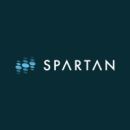It’s a common story among programmers and software developers. Most tech pros started coding as a hobby. Soon, the hobby became a love and an obsession. Then it developed into an area of study, a career and an identity.
But as most software engineers progress in their careers, they take on stretch projects, work overtime hours and struggle to keep pace with the changes in technology. In fact, a recent Haystack Analytics study revealed that 83% of software developers are burnt out. They cited high workload, inefficient processes and unclear goals as the top factors behind their workplace fatigue.
William Rudnisky is Spartan’s software engineering director. He knows that any successful manager must face the issue of burnout head-on. “By addressing work-life balance concerns, managers can positively impact team members' performance and job satisfaction,” he explains. “A supportive work environment improves retention rates, reducing turnover and associated costs.”
Built In recently sat with Rudnisky to get more insight on how to keep teams healthy, balanced and effective.
Spartan harnesses digital signal processing to bring real-time radar imagery solutions to improve the safety and performance of automated driving and driver-assist systems.
How have you set up your team to encourage a good work-life balance for individual contributors? Please share specifics around staffing, workflows, meetings, etc. that encourage this.
To encourage a good work-life balance for individual contributors, I've implemented several strategies within my team:
First, we maintain a balanced staffing approach, ensuring that workloads are distributed evenly to prevent burnout. We also offer flexible work hours and remote work options to accommodate personal needs and minimize commuting stress.
Secondly, we use agile methodologies such as scrum to streamline workflows. Scrum involves short, focused sprints with well-defined goals. This approach prevents scope creep and allows team members to plan their work effectively. Regular one-on-one check-ins help identify potential bottlenecks and provide support where needed.
Next, meetings are kept concise and purposeful. We use tools like Slack and Jira to minimize unnecessary in-person meetings, allowing individual contributors to focus on their tasks. Meetings are scheduled during regular work hours to respect personal time.
Lastly, we foster a culture of open communication, encouraging team members to voice their concerns and request help when needed. This ensures that everyone feels supported and it also prevents individuals from feeling overwhelmed.
What role does an open door policy play in making sure team members can speak candidly about their work-life balance — and position you to respond accordingly?
An open-door policy plays a crucial role in ensuring that team members can speak candidly about their work-life balance, and it positions the manager to respond effectively. This policy creates an atmosphere of trust and openness where team members feel comfortable approaching their manager with concerns, feedback or any issues affecting their work-life balance.
How do you protect your engineers' time to ensure they accommodate — but aren't overwhelmed — by the needs of cross-functional collaborators?
To protect my engineers' time and prevent them from being overwhelmed by the needs of cross-functional collaborators, I find it helpful to establish clear priorities for engineering tasks. By having well-defined priorities, engineers can focus on critical projects without being constantly pulled in different directions.
By having well-defined priorities, engineers can focus on critical projects without being constantly pulled in different directions.”
Furthermore, implementing agile methodologies helps break down tasks into manageable sprints. This allows engineers to focus on specific objectives and minimizes interruptions from cross-functional collaborators.
I’ve also found it helpful to empower engineers with clear ownership of their tasks, which enables them to manage their time effectively and establish boundaries for collaboration.
These are a few of the strategies I employ to keep my team focused on the big picture, while simultaneously minimizing cross-traffic scope creep and empowering them to deliver exceptional results.







